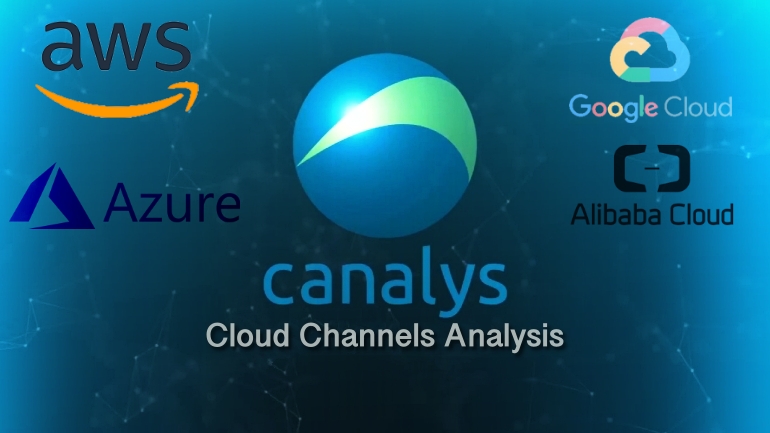Swedish telecom giant, Ericsson, is making strides in harnessing the virtues of Open and Cloud RAN through a series of noteworthy offerings and trailblazing collaborations. Recent ventures with Telefónica on joint Cloud RAN trials underline a shared vision for a dynamic, open network architecture. This exploration goes beyond mainstream, incorporating automation and intelligent orchestration, with potential benefits to macro networks and enterprise applications alike. Ericsson’s commitment to open standards is further emphasized through successful deployment of radio hardware ready for next-gen open fronthaul technology and an intriguing pledge to offer an expansive Open RAN portfolio by next year.
Content Guru, a global leader in cloud contact center and customer experience (CX) technology, has unveiled a groundbreaking addition to its storm® platform. In a significant move, the company has integrated Google Business Messages, a digital communication channel, into its repertoire. This integration empowers customers to engage with brands via various Google entry points, including Google Search, Google Maps, and Google Ads.
Transferring 5G workloads to the public cloud is proving slower than expected, leading financial firm Dell’Oro to adjust its growth predictions for 5G standalone (SA) solutions down. Despite this, a growth rate of 65% over five years is still anticipated. However, the slow adoption of 5G SA by mobile network operators and enterprises has led to a cautious approach. Hyperscale cloud providers look set to hold just 6% of total market revenue in the next five years, underscoring the remaining untapped potential in the 5G SA market.
The Q2 global market growth for cloud infrastructure services showed a flourishing trend, although at a slightly reduced rate from Q1. The noteworthy strides are largely linked to evolving spending habits, with AI expected to power considerable growth soon. Amazon and Microsoft demonstrate this shift, announcing AI-focused programs in response to the rising demand. Nevertheless, mastering AI implementation comes via strategic partnerships, open to those willing to forward AI applications.
Ribbon Communications, a global provider of communications software, IP, and optical networking solutions to service providers, companies, and critical infrastructure sectors, has announced that its Session Border Controllers have been certified for Google’s new SIP Link. Customers can use Google SIP Link to link their existing carrier to Google via a network of certified Session Border Controllers (SBC). This adaptability enables the use of existing telecommunications infrastructure while maintaining continuous service with the user’s current carrier. The extensive enterprise SBC portfolio from Ribbon, which is installed in service provider networks all over the world, provides businesses with call encryption, secure telecom connectivity to help prevent fraud and unauthorized access, as well as protection for the larger enterprise data network from malicious users. These SBCs have undergone extensive testing to ensure that they offer strong SIP security and compatibility, including with traditional PBXs, contact centers, analog devices, SIP…
Google has a long history of secretly working on complex, high-tech projects, and the company has disclosed yet another such initiative. Aalyria, a new telecom company, was introduced on Monday. Within Google, it was known by the code name “Minkowski.” Despite the lack of precise information, sources claim that the company has been developing software for satellite-based, high-speed communications networks. Aalyria stated in a media release that its goal is to manage extremely fast, remarkably secure, and highly complicated communication systems that span land, sea, air, near space and deep space. However, Google declined to disclose information about Aalyria, including how long it has been developing the technology and how many employees are joining the startup. The Loon group’s software will be converted by Aalyria experts into a cloud-based system for controlling intricate networks that link high-speed Internet to objects such as satellites, aircraft and ships. …
According to Google Cloud, it successfully stopped the greatest distributed denial-of-service (DDoS) assault ever, which reached a peak of 46 million requests per second (rps). One Google Cloud client who was utilizing the DDoS protection service Google Cloud Armor was the target of the assault on June 1. The attackers blasted consumers’ HTTP/S Load Balancer with HTTPS requests for 69 minutes, starting with 10,000 rps and quickly scaling up to 100,000 rps until peaking at a stunning 46 million rps. The assault was notable not just for its surprisingly enormous level of traffic, but also for other factors. 5,256 source IPs from 132 different countries participated in the assault. According to Google, it is the largest ever attack at Layer 7, which refers to the applications top layer in the Internet’s OSI model. The assault on Google’s client was nearly twice as large as a June HTTPS…
Following a year-long investigation that indicated the two corporations had a tight grip on the industry, the UK competition authority is launching an investigation into Apple and Google’s market clout in phone browsers and cloud gaming. The Competition and Markets Authority (CMA) is seeking feedback on opening a market probe that would give it broad powers to address Google and Apple’s monopoly in mobile phone systems. The CMA might use a market investigation to intervene in Apple and Google’s provision of mobile browsers and distribution of cloud gaming services via their app stores and devices. The regulator has decided after a year of investigation that Apple and Google had an effective duopoly on mobile ecosystems, allowing them to exert an unfair grip on these markets, which include operating systems, app stores, and mobile web browsers. According to the CMA, the organization has examined where it may take…
DIDWW, a global telecoms operator that offers premium quality VoIP communications and SIP trunking services, is now a solution partner for Ribbon Communications Inc., a global provider of real-time communications software for service providers and enterprises. The DIDWW two-way SIP trunking solution is fully interoperable with Ribbon’s Session Border Controllers SWe Edge & CNe Edge. This combination will make it easy to provide mutual customers with secure, real-time services, while supporting simpler and more cost-effective connectivity for a wide range of unified communications (UC) solutions. Compatibility includes industry-leading providers such as Microsoft, Zoom, Cisco, Amazon, Ring Central, Twilio, Genesys, NICE CXone and more. The interoperability of DIDWW’s two-way voice services with Ribbon’s SBCs will provide customers with an extremely easy setup process. The powerful DIDWW SIP trunking solution offers virtually unlimited call capacity and flexible VoIP trunk configurations to assist businesses of any size in expanding their local or international communications. The company’s extensive international coverage of…
According to the most recent report from Canalys Cloud Channels Analysis, the worldwide spending on cloud infrastructure services has increased by more than one third (37.6%) year-on-year, soaring to USD 26.3 billion in the second quarter of 2019. The ranking of the leading cloud service providers remains unchanged, with Amazon Web Services (AWS) dominating at 36.1 percent growth, with revenue of over USD 8.3 billion, and a total market share of 31.5 percent. Microsoft Azure comes second with its sales growing by 63.6 percent to just under USD 5 billion, increasing its marketing share to 18.1 percent. In third place is Google Cloud with a 9.5 percent market share, followed by Alibaba Cloud in the fourth position. In total, cloud infrastructure revenue grew by USD 7.2 billion compared to a year ago, and the current expansion marks “the biggest ever quarterly increase in terms of value, highlighting the continued robust…













